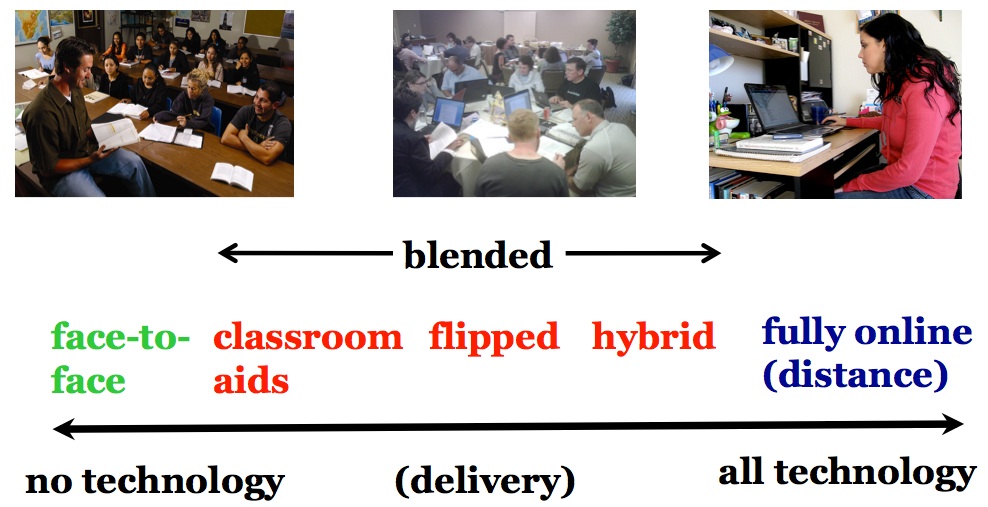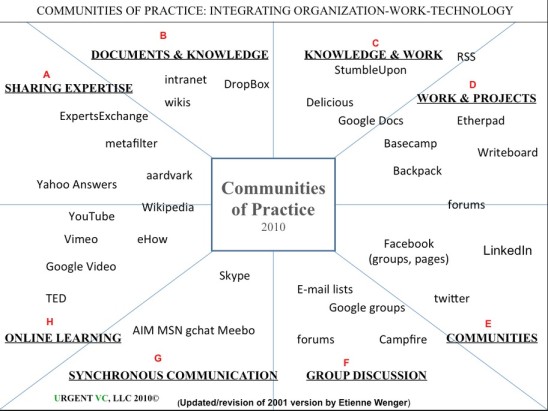10 key takeaways about differences between classroom, blended, online and open learning
http://www.tonybates.ca/2015/02/21/10-key-takeaways-about-differences-between-classroom-blended-online-and-open-learning/
Tony Bates shares his thoughts on the difference

Chapter 10 of Tony Bates online open textbook, Teaching in a Digital Age:
– See more at: http://www.tonybates.ca/2015/02/21/10-key-takeaways-about-differences-between-classroom-blended-online-and-open-learning/#sthash.MOymkn9F.dpuf
More on F2F, blended/hybrid and online learning in this blog:
https://blog.stcloudstate.edu/ims/?s=blended
https://blog.stcloudstate.edu/ims/?s=hybrid
https://blog.stcloudstate.edu/ims/?s=online+learning
2015-nmc-horizon-report-HE-EN
Horizon Report > 2015 Higher Education Edition
Key Trends Accelerating Technology Adoption in Higher Education 6
Long-Term Trends: Driving Ed Tech adoption in higher education for five or more years
> Advancing Cultures of Change and Innovation 8
> Increasing Cross-Institution Collaboration 10
Mid-Term Trends: Driving Ed Tech adoption in higher education for three to five years
> Growing Focus on Measuring Learning 12
> Proliferation of Open Educational Resources 14
Short-Term Trends: Driving Ed Tech adoption in higher education for the next one to two years
> Increasing Use of Blended Learning 16
> Redesigning Learning Spaces 18
Significant Challenges Impeding Technology Adoption in Higher Education 20
Solvable Challenges: Those that we understand and know how to solve
> Blending Formal and Informal Learning 22
> Improving Digital Literacy 24
Difficult Challenges: Those we understand but for which solutions are elusive
> Personalizing Learning 26
> Teaching Complex Thinking 28
Wicked Challenges: Those that are complex to even define, much less address
> Competing Models of Education 30
> Rewarding Teaching 32
Important Developments in Educational Technology for Higher Education 34
http://higheredmanagement.net/2014/10/22/stuck-in-the-90s-online-course-design-in-traditional-higher-education/
Of course, not all aspects of online course design require a team of specialists, a longer development time, and more funding. Some things can be done quickly, cheaply and by individuals with focused skill sets.
But technology can, when built with a deep understanding of how students learn, meet both of these needs. We can build online courses that provide students with hundreds of opportunities to test their knowledge. Using scientifically-based learning analytics, we can provide each learner with immediate, context-specific feedback. We can build software that constantly responds to each student’s cognitive and educational differences and serves up activities that address these differences.
-

Michael
-

Judith
-

Alex
-

Maria
-

Alex
-

Judith
Adobe Connect webinar: https://desire2learn.adobeconnect.com/_a707373752/p1sx4w2gfir/?launcher=false&fcsContent=true&pbMode=normal
1. Build personal knowledge base in web accessibility for each participant
2. Create Accessible images, diagrams and charts
3. same for audio and video
4. same for HMTL content
5. same for other formats (PDF, Word, PPT)
http://bostinno.streetwise.co/2014/09/24/mit-study-how-do-online-courses-compare-to-traditional-learning/
MIT recently released its final report on what the school’s future will look like, education-wise.
As with any disruptive technology, MOOCs have been viewed with enthusiasm in many quarters and skepticism in some. However, the underlying facts are inarguable: that the rising cost of education, combined with the transformative potential of online teaching and learning technologies, presents a long-term challenge that no university can afford to ignore.
eLearning for the Mobile Generation
http://www.pinterest.com/pin/58054282672001378/

3 Free Communication Tools to Communicate with Students’ Parents.
http://www.educatorstechnology.com/2014/09/3-excellent-free-tools-to-communicate.html
ClassDojo = Check out this guide to learn more about ClassDojo.
SchoolCircle – Learn more about SchoolCirlce from this review.
Remind – Check out this guide to learn more about Remind.






